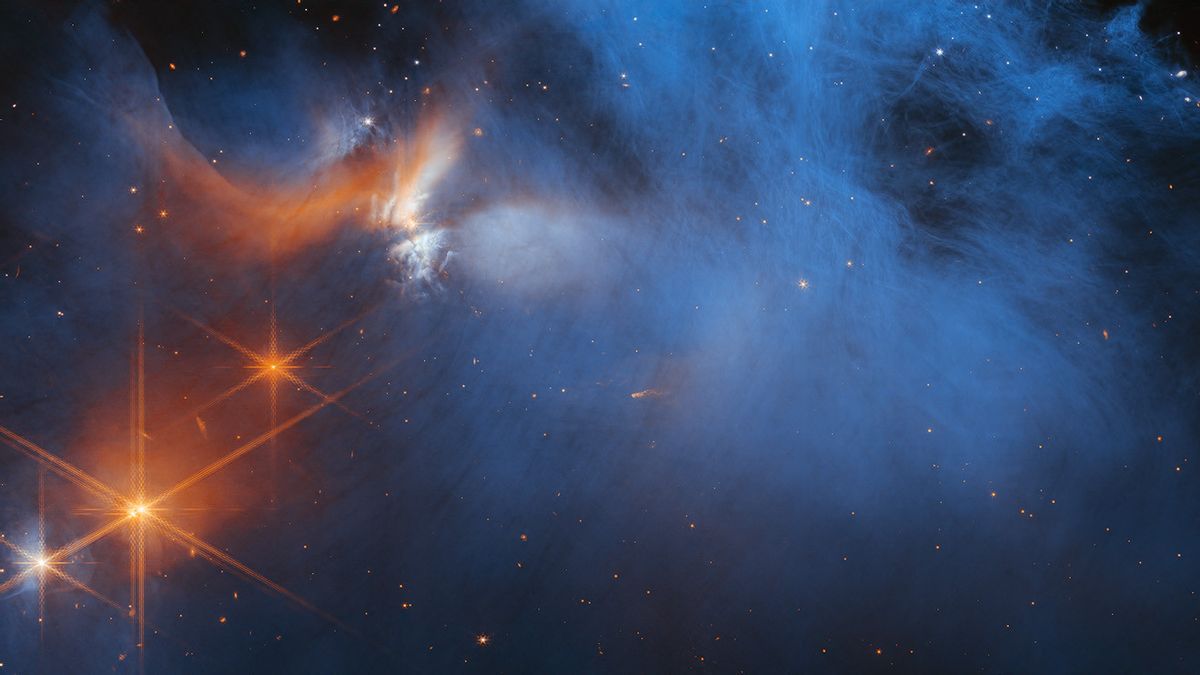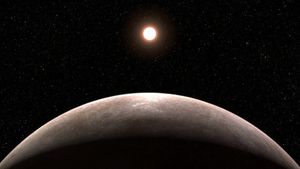JAKARTA - An international team of astronomers has just peeked into the clouds of Chamaeleon I and discovered many of the deepest and coldest types of ice ever, using NASA's James Webb Space Telescope.
Chamaeleon I is a star-forming region about 500 light years from Earth. The cloud region observed by the Webb Telescope is known to be isolated from current star formation and extremely dense.
It made him very cold. In addition, astronomers have identified frozen forms of a wide variety of molecules, ranging from carbonyl sulfides, ammonia, and methane, to the simplest complex organic molecule, methanol.
It was the most comprehensive census to date of available icy material to create future generations of stars and planets, before they are heated during the formation of young stars.
The Webb Telescope's extraordinary sensitivity in the infrared was also able to capture the absorption spectrum as starlight passed through the clouds, making it possible to identify elements that were key to the development of Earth-like planets, such as carbon, hydrogen, oxygen, nitrogen, and sulfur (known as CHONS).
A statement from the University of Bern notes that the ice found on Chamaeleon I has been the coldest on record.
The Webb telescope measures this specification of ice at -263 degrees Celsius. That's just 10 degrees Celsius above absolute zero. More important than the temperature of ice is what it's made of.
All CHONS materials are in forms such as carbonyl sulfide, ammonia, and methane. As described, the cloud contains traces of methanol and when combined with other ice molecules, methanol can form amino acids, which are the basic building blocks of proteins.
Astronomers believe that many of these essential compounds for life were present on Earth due to the impacts of comets and asteroids. The new Webb Telescope observations show these materials were already forming in the cold molecular clouds that would give rise to the Solar System.
"We couldn't observe this ice without Webb," explained Klaus Pontoppidan, a Webb project scientist at the Space Telescope Science Institute in Baltimore, Maryland, who was involved in the research, quoted from the NASA website, Monday, January 30.
“Ice appears as a drop against the continuum of background starlight. In regions as cold and dense as this, most of the light from the background stars is blocked, and Webb's extraordinary sensitivity is required to detect starlight and therefore identify ice in molecular clouds."
SEE ALSO:
Using the Webb Telescope's observations of Chamaeleon I, astronomers can for the first time estimate the amount of sulfur in pre-stellar ice.
While the level was higher than the previous measurement, it was lower than expected overall, and it was the same for all other CHONS elements.
This presents a challenge for astronomers to determine where matter is hiding, for example, in a matter such as soot or rock that would not show up in the absorption spectrum of the Webb Telescope.
This research is part of the Ice Age Project, one of the early-release science programs conducted by the Webb Telescope. Further observations are planned, which may be able to trace the journey of ice from molecular cloud states to the formation of icy comets around the new Solar System.
The English, Chinese, Japanese, Arabic, and French versions are automatically generated by the AI. So there may still be inaccuracies in translating, please always see Indonesian as our main language. (system supported by DigitalSiber.id)


















